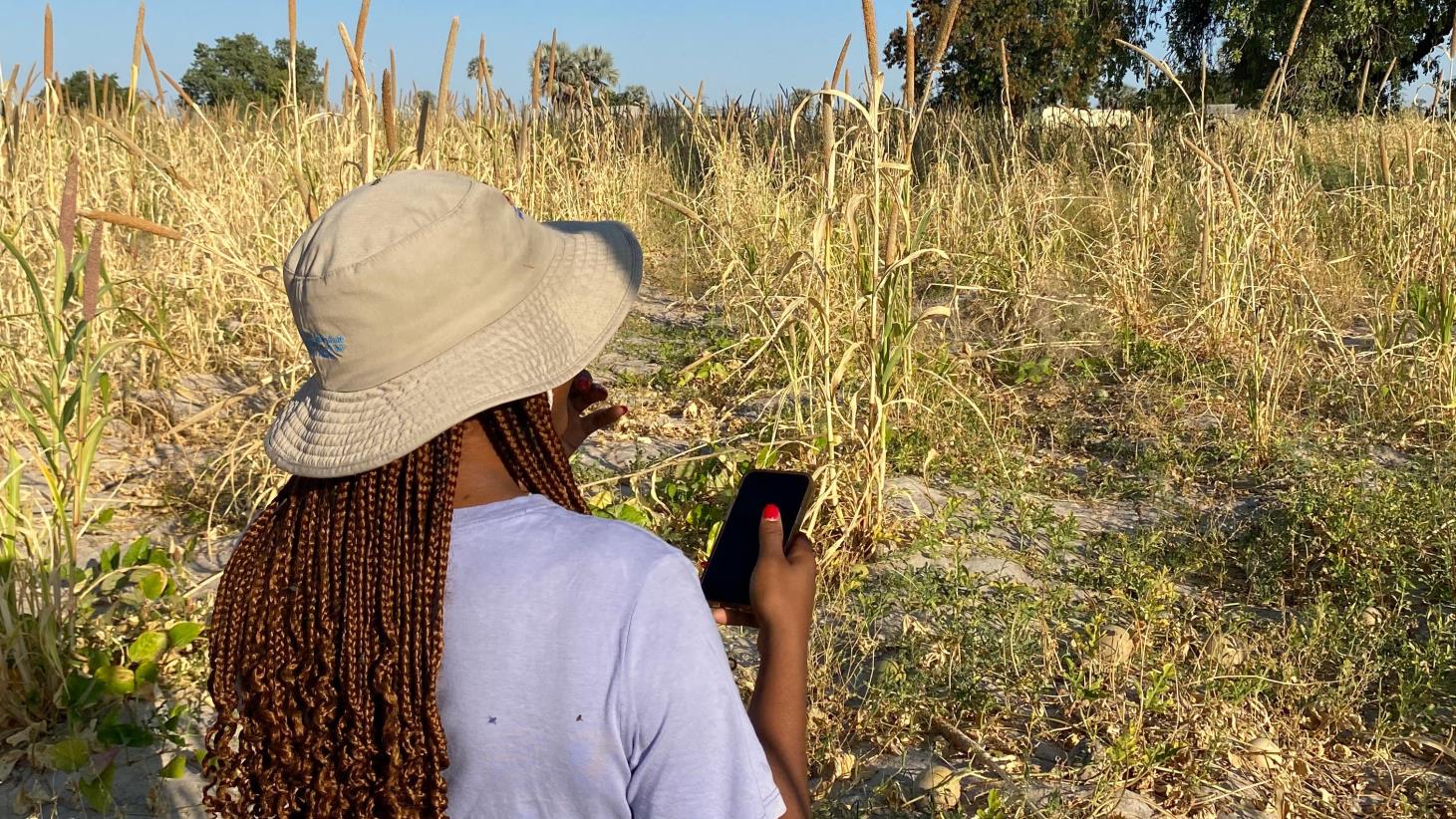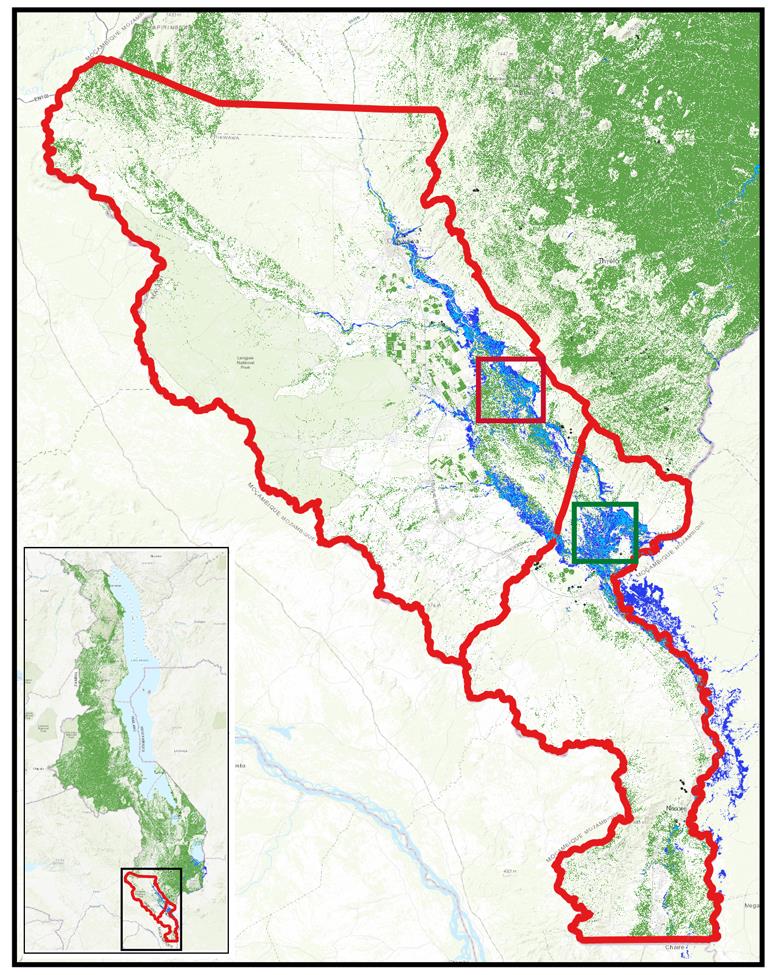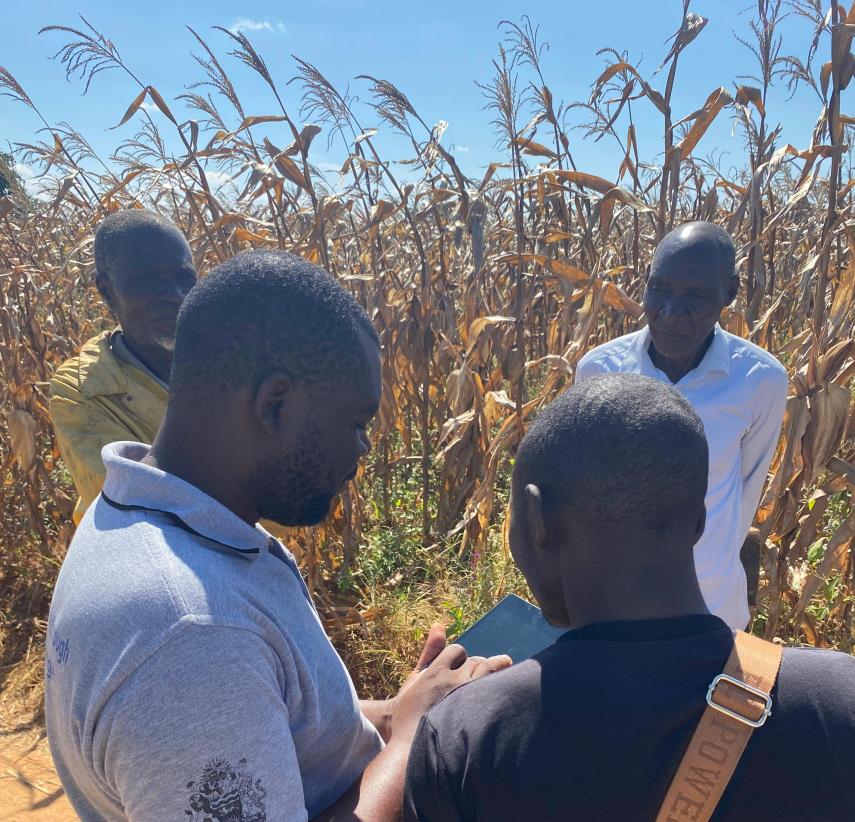
From the soil to the stars
Field surveys and satellites help Malawi's farmers manage crops better and access disaster relief more quickly
An FAO and NASA Harvest project is combining satellite images with on-the-ground survey data through a mobile application. This data facilitates disaster relief efforts and gives farmers in Malawi and Namibia better insights into growing food. ©NASA Harvest/Christina Justice
13/11/2023
In ancient times, farmers would consult the night sky to determine the right time to sow or harvest. In today's information age, that data is no longer coming from the position of the stars, but from human-made satellites and mobile apps. The use of these innovative tools is helping farmers grow food better. It's also helping governments make better policy decisions and can play an invaluable role in helping relief efforts reach those in need more quickly when disaster strikes.
Through its Global Information and Early Warning System on food and agriculture (GIEWS), the Food and Agriculture Organization of the United Nations (FAO) has teamed up with the Global Food Security and Agriculture Consortium of the National Aeronautics and Space Administration (NASA), known as NASA Harvest, to improve crop yield estimates, provide tailor-made solutions to assess crops and help organize rapid responses for disasters.
Funded by the United States Agency for International Development (USAID), the project, launched in 2021, combines survey data collected directly from the field using a mobile application with satellite images of the field taken from space. The two sets of data are then fed into machine-learning models to provide maps that detail cropland more accurately and give insights on crop conditions.
This marriage of field and satellite data sources is particularly critical in countries, such as Malawi and Namibia, where smallholder farms make up the majority of certain regions, and satellites alone cannot easily identify agricultural field boundaries.


These cropland maps of Malawi were developed using NASA Harvest machine-learning models and on-ground data. The light blue shows the areas of farmland flooded by Cyclone Freddy. ©FAO/NASA Harvest/Malawi Ministry of Agriculture/UNOSAT
The impact of Cyclone Freddy
In Malawi, FAO and NASA Harvest, which is led by the University of Maryland, used digital and remote-sensing-based tools produced as part of the project to provide a rapid assessment of the floods caused by Tropical Cyclone Freddy in March and April of 2023.
Freddy brought with it the equivalent of six months of rain in just six days, killing over 500 people and displacing approximately 565 000. To make matters worse, the weather system hit Malawi at the end of the rainy season, when river levels were already high.
The assessment, which was carried out by Malawi's Ministry of Agriculture with technical support from FAO officers on the ground in Malawi and NASA Harvest, captured data from 2 095 fields across 11 districts in the southern region of the country.
Of the farmers surveyed, 86 percent reported flooding of their fields. Over a quarter of farmers lost food stocks due to flooding, and nearly 40 percent of farmers reported livestock mortalities. Almost all surveyed farmers reported that the current harvest will not be sufficient to meet their household needs until the next harvest in April 2024.
Crucially, such granular data was obtained in a matter of days rather than weeks. In an emergency, such speed and accuracy can make a world of difference for relief and response efforts.
"The results from the field assessment provided critical insights into the impact of Freddy, giving the government the necessary information to send relief efforts in a timely manner to the areas and people most in need," said Jonathan Pound, FAO Economist working with GIEWS.
How it’s done
To collect the foundational data on which rapid assessments like these are based, officers from the Agriculture Ministry, trained virtually by FAO and NASA Harvest, collected data on the ground using a mobile-based application. Connected to GPS to mark the exact location of the field, the app is highly intuitive and collects information as the local officials walk between rows of crops. Since it also works offline, the app reduces costs and gives users the added flexibility of uploading the data later.
Each field is tagged with a GPS coordinate and labeled by the type of crop that is grown there, alongside a multitude of other farm information. This data is then used to train machine learning models that identify cropland and crop types from satellite imagery, producing high-resolution maps.
In Namibia, which was hit by drought in 2023, the mobile app allowed local officials and agricultural extension officers to complete a total of 4 500 surveys, instead of the 600 that would have been carried out using pen and paper. This method is not only affordable and accurate but also minimizes processing times since all the information is standardized.
Beyond vastly speeding up operations and reducing costs, "the big advantage is a large improvement in the quality of the data collected," said Samuel Kirichu, FAO Officer working in the Malawi country office.
This is particularly true for smallholders who don't always have precise knowledge about the size of their farms. Having more accurate data of their land can help better inform their use of inputs such as seeds and fertilizer, avoiding the risk of over-fertilization and reducing their costs.
According to Christina Justice, the Food Security and Early Warning co-lead for NASA Harvest, data collected in this way also helps identify where there are developing threats to crops, such as droughts and diseases. In addition, having "a first take of what yield estimates are looking like several months before the harvest is incredibly useful," since it allows for better planning along the agri-food supply chain.

In addition to its uses for disaster response, the yield estimate data collected in GIEWS is incredibly useful to farmers, allowing for better planning along the agri-food supply chain. ©NASA Harvest/Christina Justice
These insights are particularly critical this cropping season, as the impact of El Niño is set to compromise the harvest in Malawi.
"With El Niño forecast to bring dry conditions this season, close monitoring of crops and immediate access to this data is more crucial than ever," Pound said.
Further ahead, FAO and NASA Harvest plan to provide early yield forecast estimates for 2023/2024 to the Ministries of Agriculture in Malawi, Namibia and Kazakhstan. Work is also underway to further develop the mobile-based crop assessment surveys and to expand the project to other countries.
Related links
Learn more

